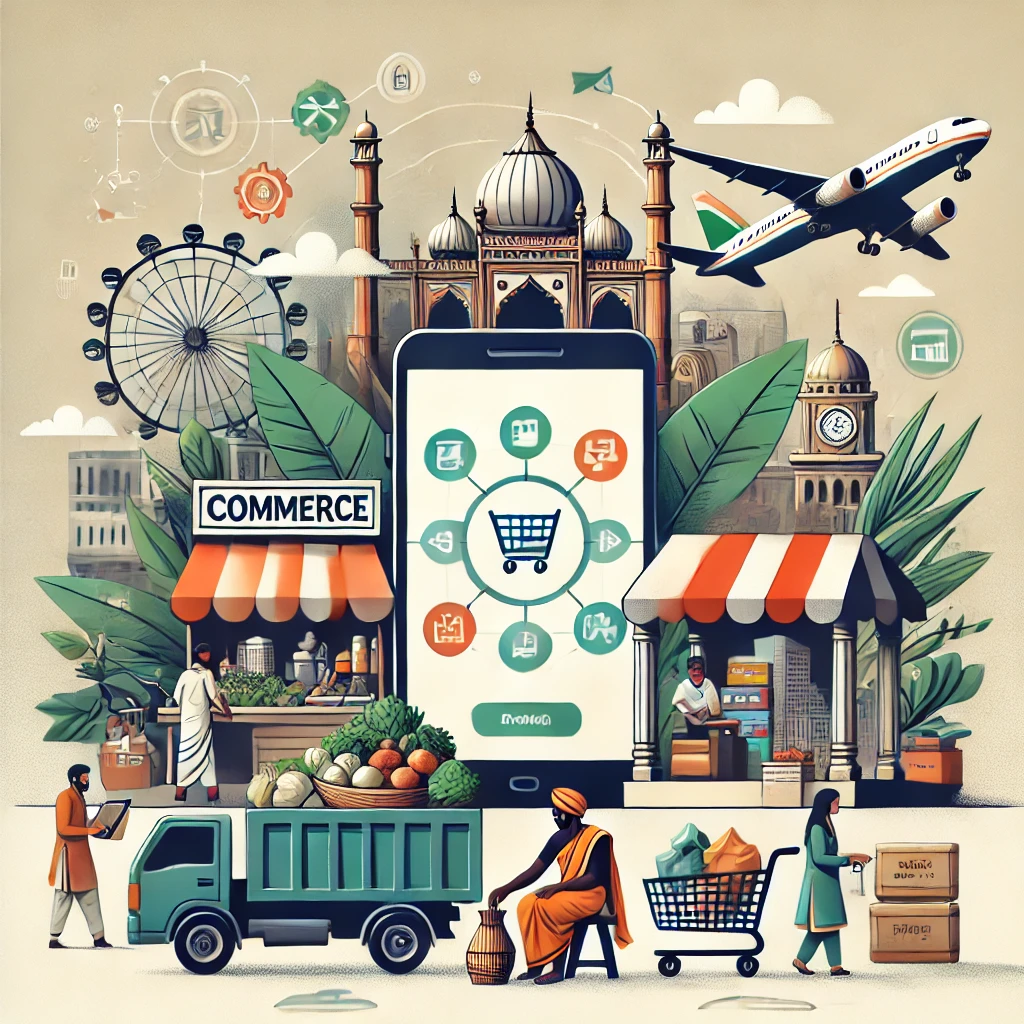Commerce is an integral part of our daily lives, influencing how we earn, spend, and manage resources. In simple terms, commerce is the exchange of goods, services, and ideas to fulfill the needs and wants of individuals and businesses. For students of the Indian subcontinent, understanding commerce is crucial because it forms the backbone of our economies and shapes career opportunities in diverse fields such as accounting, management, economics, and entrepreneurship. In this article, we will explore the meaning, scope, importance, and various components of commerce, with a focus on practical examples relevant to undergraduate students.

Definition of Commerce
Commerce can be defined as the activity of buying and selling goods and services, especially on a large scale. It involves not only the exchange of goods but also the systems, processes, and institutions that facilitate such exchanges.
For example:
- A farmer in India sells crops to a wholesaler in a nearby mandi (market).
- A shopkeeper buys products from a supplier to sell them to customers.
- An e-commerce website like Amazon facilitates the purchase of products online.
These are all examples of commerce in action, showcasing how it connects producers, intermediaries, and consumers.
The Scope of Commerce
Commerce is a vast field that includes multiple activities essential for the smooth functioning of businesses and economies. It can be broadly categorized into the following areas:
- Trade:
Trade is the core activity of commerce, involving the exchange of goods and services for money. Trade can be further divided into:
- Domestic Trade: Conducted within the boundaries of a country. For example, a local kirana shop buying and selling goods.
- International Trade: Conducted between two or more countries. It includes imports (buying goods from other countries) and exports (selling goods to other countries).
- Auxiliaries to Trade:
These are the support services that help trade function efficiently. They include:
- Transportation: Moving goods from producers to consumers (e.g., trucks carrying goods to markets).
- Warehousing: Storing goods until they are needed.
- Banking: Providing financial support and transactions.
- Insurance: Protecting goods from risks like theft or damage.
- Advertising: Informing customers about products and services.
- E-commerce:
With the rise of technology, commerce has shifted online. Websites like Flipkart, Myntra, and Zomato exemplify how digital platforms facilitate trade and services. - Business Services:
Services like consultancy, legal advice, and financial planning also fall under the ambit of commerce as they support businesses and consumers in decision-making.
Importance of Commerce
Commerce plays a vital role in the development of any economy. Here’s why it is essential:
- Economic Development:
Commerce creates jobs, encourages industrial growth, and boosts GDP. In India, commerce has been a significant contributor to the country’s economic development through activities such as trade, retail, and banking. - Standard of Living:
Through commerce, people have access to a variety of goods and services, improving their quality of life. For example, global trade allows us to enjoy products like smartphones, clothes, and food items from other countries. - Employment Opportunities:
Commerce offers diverse career paths in fields such as banking, insurance, logistics, and entrepreneurship. For example, after studying commerce, students can pursue careers as accountants, marketing managers, or business analysts. - Facilitates Innovation:
Competition in commerce drives businesses to innovate, resulting in better products and services for consumers. For instance, the entry of e-commerce platforms has revolutionized the way we shop. - Global Integration:
Commerce connects countries through trade and investment, promoting cultural exchange and mutual growth. India’s trade partnerships with countries like the USA, China, and Japan exemplify this integration.
Components of Commerce
1. Trade
Trade is the most visible aspect of commerce. It ensures that goods produced in one region are available to people in another. Trade can be classified into two main types:
- Wholesale Trade: Involves buying goods in bulk and selling them to retailers. For example, wholesalers purchase large quantities of rice from farmers and distribute them to retail shops.
- Retail Trade: Involves selling goods directly to consumers. For example, a shopkeeper selling stationery items to students.
2. Banking
Banks play a crucial role in commerce by providing financial services such as loans, savings accounts, and payment facilities. For instance, a business might take a loan from a bank to expand its operations.
3. Insurance
Insurance safeguards businesses and individuals from potential risks. For example, a cargo company might insure its goods against damage during transit.
4. Transportation
Efficient transportation systems enable goods to reach consumers on time. In India, railways, roadways, and airways are vital for commercial activities.
5. Warehousing
Warehousing ensures the storage of goods until they are needed. For example, cold storage facilities preserve perishable items like fruits and vegetables.
6. Advertising
Advertising informs and persuades consumers to purchase products. Examples include television commercials, billboards, and social media campaigns.
Commerce in the Indian Context
Commerce holds particular significance in the Indian subcontinent due to its large population, diverse economy, and growing market potential. Here are some unique aspects:
- Small Businesses:
India’s economy thrives on small and medium-sized enterprises (SMEs), which contribute significantly to employment and GDP. - Informal Sector:
The unorganized sector, such as street vendors and small traders, plays a vital role in India’s commerce landscape. - E-commerce Boom:
Platforms like Flipkart, Paytm, and Swiggy have transformed traditional commerce into a digital-first model, catering to the tech-savvy youth. - Government Initiatives:
Programs like ‘Make in India,’ ‘Digital India,’ and GST reforms have boosted commerce by streamlining processes and encouraging entrepreneurship.
Career Opportunities in Commerce
Studying commerce opens doors to numerous career options. Here are some popular ones:
- Accounting and Finance:
- Chartered Accountant (CA)
- Cost and Management Accountant (CMA)
- Financial Analyst
- Management:
- Business Administration (MBA)
- Human Resources (HR)
- Banking and Insurance:
- Bank Officer
- Insurance Advisor
- Entrepreneurship:
- Starting your own business or startup.
- Academia and Research:
- Teaching and pursuing research in commerce-related fields.
Challenges in Commerce
While commerce offers numerous benefits, it also faces challenges such as:
- Digital Divide:
Not everyone has access to digital platforms, especially in rural areas. - Economic Disparities:
Unequal distribution of resources can hinder commerce in certain regions. - Regulatory Issues:
Complex laws and taxation policies can create obstacles for businesses.
Conclusion
Commerce is a dynamic and ever-evolving field that touches every aspect of our lives. For undergraduate students in the Indian subcontinent, understanding commerce is more than just a subject; it’s a gateway to understanding the functioning of economies and societies. From the local vendor to multinational corporations, commerce facilitates the exchange of goods, services, and ideas, making the world a more interconnected place.
By delving into its components, significance, and career opportunities, students can better appreciate the role commerce plays in shaping their future and the world around them. As the field continues to grow with advancements in technology and globalization, the study of commerce remains as relevant and exciting as ever.
